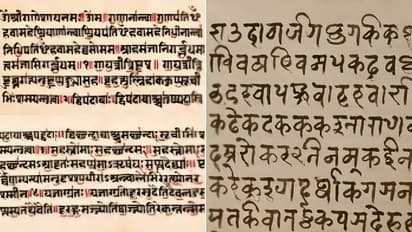IIT Roorkee Builds World's First AI to Turn Modi Script into Devanagari

Synopsis
IIT Roorkee has built the world's first AI tool to transliterate historic Modi script into Devanagari, helping preserve ancient Indian documents and making them easier to read, study and save for future generations.
Historic Indian manuscripts may now be easier to read and save, thanks to a new AI model from IIT Roorkee. The tool will act like a bridge between India's past and future. With the AI model, the old language of kings and scholars can now be read and shared easily, even by young students today.
What is Modi script and why it matters
Modi script is a very old way of writing used mainly in Maharashtra. It was used hundreds of years ago, during the time of Shivaji Maharaj and the Peshwa rulers. Important documents like land records, medicine texts, and letters were written in this script.
But today, not many people know how to read Modi script. Also, many of these old records are getting damaged over time. This is why saving them is very important.
What IIT Roorkee has built
The Indian Institute of Technology (IIT) Roorkee has made the world's first AI model that can transliterate Modi script into the Devanagari script, which is used to write Hindi, Marathi and other Indian languages.
This means the AI can read an old Modi script and turn it into text that people today can read easily.
How the AI works
The new model is called MoScNet. It uses a smart system called a Vision-Language Model. It looks at pictures of handwritten Modi script and then understands what each letter means. Then, it changes that into Devanagari script.
This model was trained using a special dataset called MoDeTrans. This dataset has over 2,000 real images of Modi manuscripts. Experts have already translated these images, so the AI could learn correctly.
Who worked on this project
The lead researcher of the project is Professor Sparsh Mittal of IIT Roorkee. He worked with students Harshal and Tanvi from COEP Technological University and Onkar from Vishwakarma Institute of Information Technology, Pune.
Why this project is important
India has more than 40 million Modi script documents stored in different libraries and government offices. But there are only a few people who can read them. With this AI, we can now read, understand, and save these documents much faster. This can help in:
- History research
- Saving old knowledge
- Studying Ayurveda and science from the past
- Making government records easy to access
Experts on AI tool
News agency PTI quoted Professor Kamal Kishore Pant, Director of IIT Roorkee, saying that this 'technology will help protect India’s rich history and make it easier for future generations to learn from old records'.
Professor Sparsh Mittal said they want to use AI in the right way to help people, to save culture, and to support research. The team also wants to keep this technology open-source so that anyone in India can use it.
What's next for this AI
This tool may soon be used in big national programs like Digital India, Bhashini and even BharatGPT. These projects aim to bring Indian languages into the world of AI and the internet. By adding this tool, more people can access knowledge written long ago.
(With inputs from news agencies)
Stay updated with the Breaking News Today and Latest News from across India and around the world. Get real-time updates, in-depth analysis, and comprehensive coverage of India News, World News, Indian Defence News, Kerala News, and Karnataka News. From politics to current affairs, follow every major story as it unfolds. Get real-time updates from IMD on major cities weather forecasts, including Rain alerts, Cyclone warnings, and temperature trends. Download the Asianet News Official App from the Android Play Store and iPhone App Store for accurate and timely news updates anytime, anywhere.